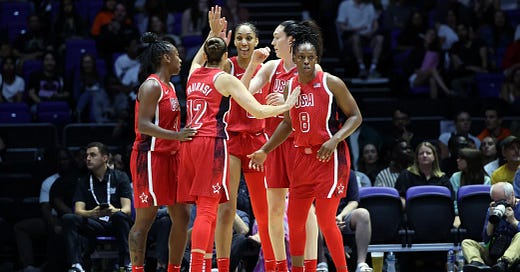Five Out: Rickea Jackson gets a shoe deal, some media rights thoughts and hey! The Olympics are on!
It’s the Olympic break so we’re talking the business, marketing and facilities of the WNBA. Andrew’s thoughts on women’s basketball for the week of July 29, 2024.
With a long break in WNBA action, Five Out this week will explore a bit of my favorite subjects: sports business and the art of television. I’ve been in broadcasting for nine years now and still work as a reporter for one of the Paramount/CBS News Owned & Operated stations. It is, quite literally, my job. So while I might go a bit long here, I hope this…
Keep reading with a 7-day free trial
Subscribe to No Cap Space WBB to keep reading this post and get 7 days of free access to the full post archives.




